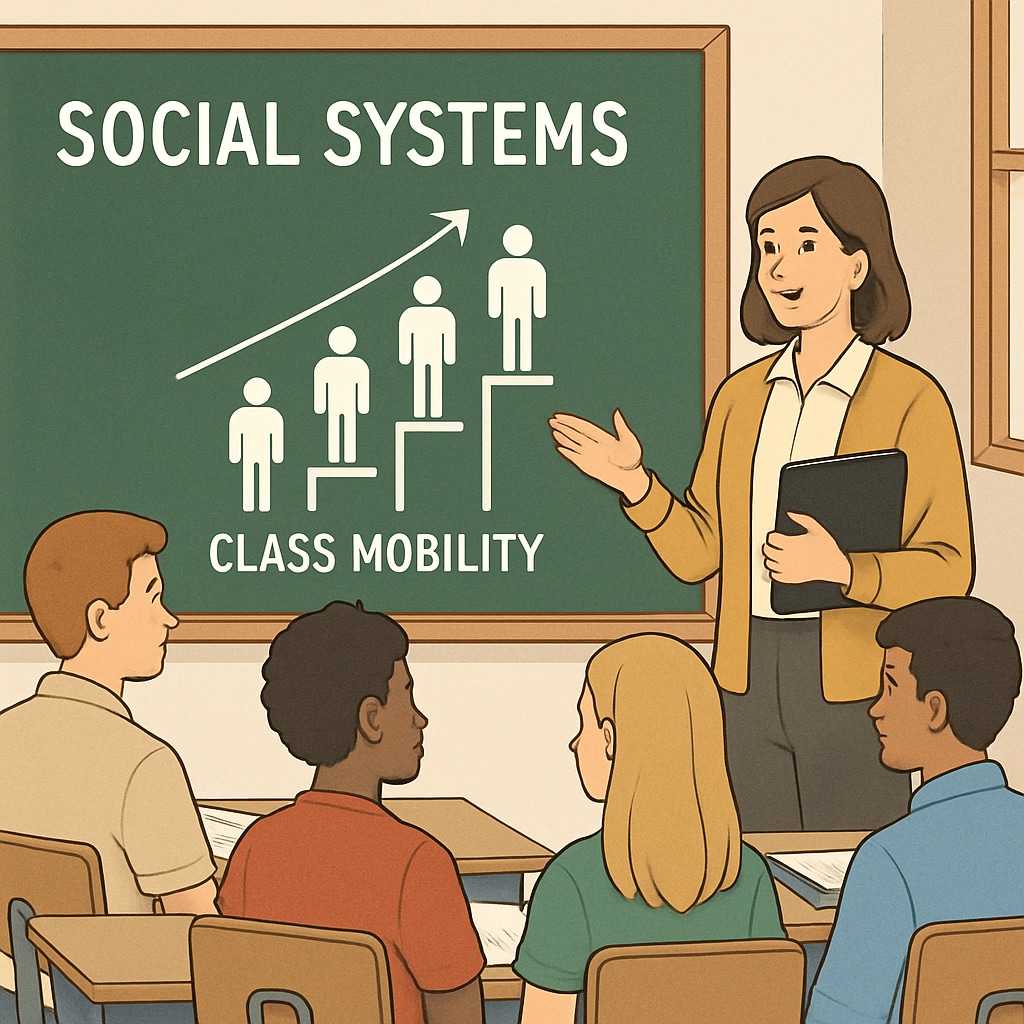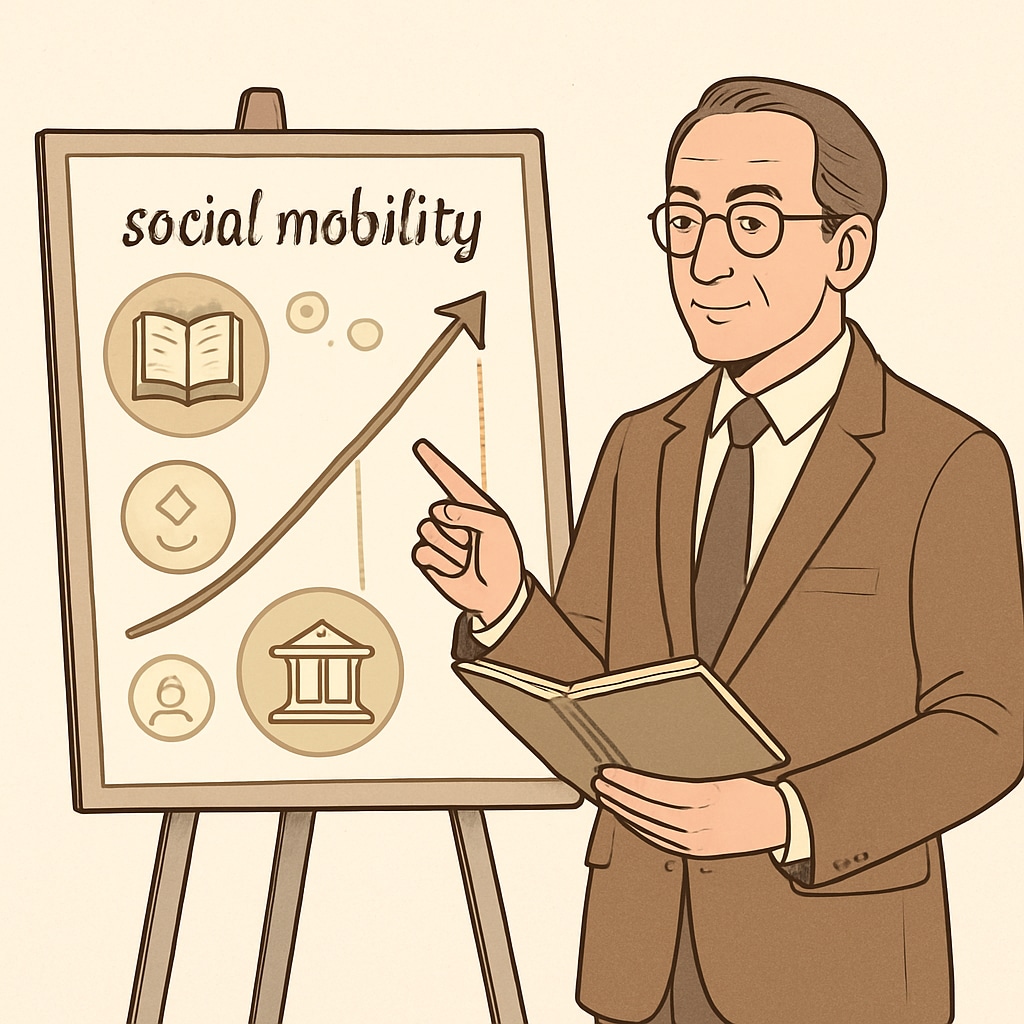The teaching of “class systems, social mobility, and immovable class structures” is central to sociology education. However, when K-12 education misrepresents this topic, the consequences can be far-reaching. A recent controversy highlights this issue: a sixth-grade sociology course claimed that social class is “lifelong and unchangeable.” This oversimplified and flawed teaching has sparked debates about the accuracy and impact of such ideas on young minds. In this article, we explore the dangers of perpetuating rigid views on class immobility and advocate for more nuanced and balanced approaches in education.
How Misrepresentation Impacts Students’ Understanding of Social Mobility
Social mobility refers to the ability of individuals or groups to move between different social classes over time. It is influenced by factors such as education, occupation, and economic opportunity. However, when students are taught that class structures are “unchangeable,” they may internalize a sense of helplessness, believing that their socioeconomic status is predetermined and that effort or ambition cannot alter their prospects.
This narrative is not only factually incorrect but also harmful. According to sociological research, while barriers to mobility exist, they are not insurmountable. For example, access to quality education, vocational training, and supportive networks can significantly enhance an individual’s chances of upward mobility. By presenting a rigid view of class systems, educators risk discouraging students from pursuing opportunities for self-improvement.

The Role of Educators in Addressing Class Misconceptions
Educators play a critical role in shaping students’ perspectives on societal structures. To avoid perpetuating “class immobility,” teachers must provide a balanced understanding of the class system. This includes discussing both the challenges of upward mobility—such as systemic inequality—and the pathways to success, such as education and community support programs.
For instance, introducing case studies of individuals who have successfully transcended socioeconomic barriers can inspire students and counteract fatalistic attitudes. Additionally, incorporating interactive discussions on social mobility statistics and historical trends can help students develop critical thinking skills and a more comprehensive view of society.
Furthermore, educators should be cautious not to oversimplify complex concepts. Social stratification is influenced by numerous interconnected factors, and presenting it in binary terms—such as “rich vs. poor” or “fixed vs. fluid”—can mislead students. Instead, a multidimensional approach that examines cultural, economic, and institutional influences is essential.

The Broader Implications of Misleading Sociology Education
The impact of inaccurate teachings on class systems extends beyond the classroom. When students internalize the idea that their socioeconomic status is unchangeable, it can lead to reduced motivation, lower academic achievement, and diminished aspirations. This mindset not only affects individual students but also perpetuates societal inequality by discouraging efforts to address systemic challenges.
Conversely, a well-informed understanding of social mobility can empower students to recognize their agency within societal structures. It can also foster empathy for others’ struggles, encouraging collective efforts to create a more equitable society. For example, policies aimed at reducing educational disparities or increasing access to affordable housing require a population that understands and values the importance of social mobility.
Ultimately, education should be a tool for empowerment, not limitation. By presenting accurate and comprehensive information about class systems, educators can inspire students to envision a future where upward mobility is achievable, despite the challenges.
Key Takeaways:
- Avoid teaching oversimplified or inaccurate concepts, such as “class immobility.”
- Highlight the factors that influence social mobility, including education and policy.
- Incorporate inspiring real-life examples to challenge fatalistic views.
- Encourage critical thinking through discussions on systemic challenges and solutions.
Conclusion: Misrepresentation of class systems in K-12 education can limit students’ understanding of social mobility and their potential. By adopting a balanced and accurate approach, educators can empower the next generation to overcome barriers and contribute to a more equitable society.
For further reading on social mobility and its influencing factors, explore resources on social mobility on Wikipedia and Britannica’s insights on social mobility.
Readability guidance: This article uses short paragraphs and clear subheadings for better comprehension. Key points are summarized in a list for easy reference, and transitions ensure a smooth reading experience.


